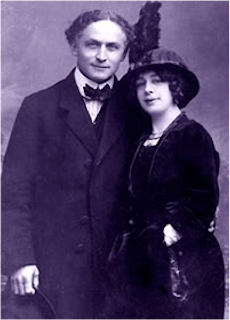In the wake of Coalhouse Walker’s demolition of two fire stations, the citizens of Westchester were terrified. They stopped going to school. They stopped going to work. They even called in the militia from New York City. The only relief that arrived was an accurate picture of Coalhouse in the newspapers. Ever since the second bombing, “Everyone’s most urgent need was to know what Coalhouse Walker looked like” (222). Strangely, while Coalhouse Walker was living in New York, his picture came from a newspaper in St. Louis.
This strange juxtaposition makes more sense when you realize that Coalhouse Walker was a ragtime musician. Ragtime music first appeared around 1896, combining European piano music and traditional African American songs, such as those sung on plantations. It was developed mostly by traveling African American pianists in the South and Midwest, and eventually the hotspot of Ragtime located itself in Missouri. This explains why Coalhouse’s picture can from St. Louis.
As ragtime developed, it gained acceptance among whites and blacks in the United States. Eventually, it was considered America’s first form of popular music. The most well known composer of that time, Scott Joplin, is still played frequently. During his career, he was most famous for his “Maple Leaf Rag,” but is probably most famous today for “The Entertainer.” His influence spread as American bands toured Europe, where ragtime craze spread as well. For example, even the famous Romantic composer Johannes Brahms composed a piece of ragtime.
For twenty-some years, Ragtime enjoyed prominence in America’s homes. By 1920, however, the craze was quickly collapsing. The public had discovered a new type of music: jazz. From then on, ragtime fell into obscurity, but parts of it lived on. Ragtime was essential in the formation of jazz. It helped to bridge the divide between European music, African American tradition, and jazz.
What made ragtime so popular? It’s use of syncopated rhythms in the melody, where the emphasized notes are not played when the audience expects it, contributed greatly to its success. These rhythms helped to create a driving feeling, adding excitement to the piece. In contrast with the melody, the harmony usually held steady, keeping a constant beat. The novel describes “The Maple Leaf” as “syncopating chords and…thumping octaves. This was a most robust composition, a vigorous music that roused the sense and never stood still a moment” (160). Ragtime’s energy and liveliness are apparent in this passage. Doctorow’s diction contributes to the energy: “Thumping octaves” and “vigorous music.” His personification of ragtime makes it seem like the music is alive and moving. In fact, he says it “never stood still.”
As stated earlier, Ragtime was the beginning of truly American music and also served as a transition to the more famous jazz style. In this way, it is representative of the book’s theme of transformation. American culture was transforming from dependence on European creations into self-reliance. In addition, the ragtime music was a creation of African Americans, but eventually gained acceptance by whites. On the way, however, it faced stiff resistant. Similarly, African Americans such as Coalhouse Walker attempted to gain acceptance against a resistant America.
By Mohan Yin
"History of Ragtime." Performing Arts Encyclopedia. Library of Congress, 29 Sept. 2006. Web. 15 May 2011.
"Ragtime: The Music That Gave Birth to Jazz." Hole in the Wall Books. N.p., n.d. Web. 16 May 2011.
Shehan, Patricia K. "The Riches of Ragtime." Music Educators Journal 73.3 (1986): 22-25. JSTOR. Web. 15 May 2011.











